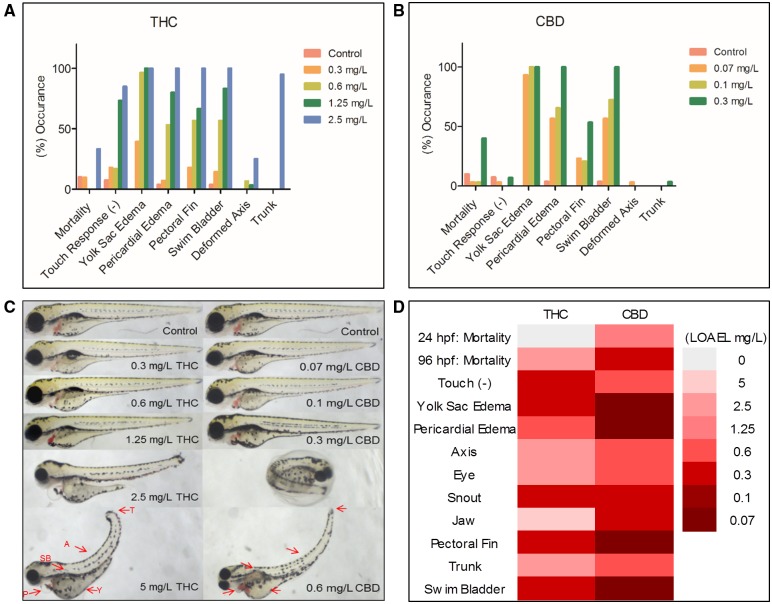Figure 1.
Following 96 h postfertilization (hpf) exposure to Δ9-tetrahydrocannabinol (THC) or cannabidiol (CBD) larvae were plated in 96-well plates (one per well) and qualitatively assessed for common developmental dysmorphologies. All morphology endpoints were designated either a yes (abnormal) or no (normal) and quantitatively calculated from the total larvae measured for both THC (A) and CBD (B). Higher concentrations with 100% occurrence in all endpoints are depicted. Subsequent phenotypical pictures were taken following the morphology screening (C), red arrows (see online version) indicate a few key morphologic endpoints (T = trunk, A = axis, SB = swim bladder, P = pericardial edema, Y = yolk sac edema). In addition to phenotypic malformations following 0.6 mg/l CBD exposure, we also observed numerous 96 hpf larvae that were unhatched. Heat-map portrayal (D) of the lowest observed adverse effect level (LOAEL) after 96 hpf exposure to THC and CBD (n = 3 replicates consisting of 10 fish per replicate).

